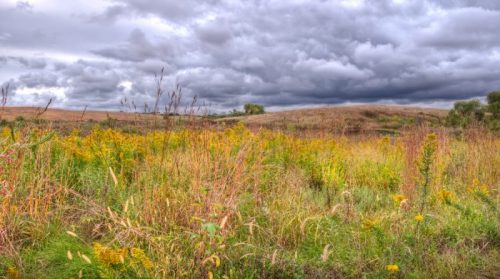Capturing and storing carbon dioxide
Terrestrial sequestration is a process that captures and stores carbon dioxide (CO2) in vegetation and soil within a few feet of the Earth’s surface, providing them with the components they need to live and grow and reducing CO2 in the atmosphere. During photosynthesis, carbon from atmospheric carbon dioxide is transformed into components necessary for plants to live and grow. As part of this process, the carbon present in the atmosphere as carbon dioxide becomes part of the plant in a leaf, stem, or roots, and the carbon is sequestered for a long period of time. Once the plant dies, or as limbs, leaves, seeds, or blossoms drop from the plant, the plant material decomposes and the carbon is released. Trees are valuable as greater amounts of carbon are tied up for longer time periods.

A greenhouse gas (GHG) is a gas that both absorbs and emits radiation in the infrared range, commonly called thermal radiation or heat. When present in the atmosphere, these gases trap radiation in the form of heat, causing a warming process called the "greenhouse effect."
Common sources of greenhouse gases
- Carbon dioxide (CO2) – CO2 comes from natural sources like wild fires, natural decomposition and humans breathing. Some common man-made sources of CO2 are coal plants and other factory emissions, prescribed burning, cement production and car emissions.
- Methane – There are natural sources of methane such as wetlands and ocean emissions. However, methane also comes from man-made sources like extraction, transportation and use of fossil fuels like coal, oil and gas, as well as from livestock farming and landfills.
- Nitrous oxide – Nitrous oxide is naturally present in the atmosphere, but human activities, such as the use of synthetic fertilizers and manure management in agriculture, fossil fuel use for transportation, sewer and wastewater management and industrial processes, also contribute to the emission of this greenhouse gas.
- Ozone-depleting gases – Fluorinated gases (f-gases) are purely man-made and come from refrigerants (e.g., Freon), aerosol propellants, solvents, fire retardants, aluminum production, the manufacture of semiconductors and electrical transmission equipment like circuit breakers.

Carbon sink
Carbon sinks are areas of vegetation (e.g., forests, grasslands, croplands, wetlands) that absorb more carbon dioxide and other greenhouse gases than they emit.
Methods of enhancing carbon buildup
Methods that enhance carbon buildup in biomass and soils include:
- Adopting conservation tillage
- Reducing soil erosion
- Minimizing soil disturbance
- Using buffer strips along waterways
- Enrolling land in conservation programs
- Restoring and better managing wetlands
- Eliminating summer fallow
- Using perennial grasses and winter cover crops
- Fostering an increase in forests
